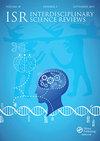这个世界的计算机
IF 1
4区 综合性期刊
Q3 MULTIDISCIPLINARY SCIENCES
引用次数: 0
摘要
GIS技术在世界各地的广泛采用以及GIS系统基于GML的事实意味着OGC对大多数计算机中地理数据的表达和处理方式具有实质性的控制权。地理信息系统(GIS)是一种用于收集、管理和分析地理数据的软件,其形式为在地图顶部或三维场景内可视化的层。《I跨学科科学评论I》的这期主题为“世界上的计算”,源于2019年10月底在意大利贝加莫举行的第五届国际计算历史与哲学会议(HaPoC),几个月前,该镇及其周边省份成为世界上受第一波新冠肺炎疫情影响最严重的地区之一。【摘自文章】《跨学科科学评论》的版权归Taylor&Francis Ltd所有,未经版权持有人明确书面许可,不得将其内容复制或通过电子邮件发送到多个网站或发布到listserv。但是,用户可以打印、下载或通过电子邮件发送文章供个人使用。这篇摘要可以节略。对复印件的准确性不作任何保证。用户应参考材料的原始发布版本以获取完整摘要。(版权适用于所有摘要。)本文章由计算机程序翻译,如有差异,请以英文原文为准。
Computing in this world
The widespread adoption of GIS technology around the world and the fact that GIS systems are based on GML mean that the OGC has substantial control over how geographical data are expressed and treated in most computing machines. A Geographic Information System (GIS) is a type of software for gathering, managing and analysing geographic data in the form of layers visualized on top of maps or inside three-dimensional scenes. This thematic issue of I Interdisciplinary Science Reviews i , titled "Computing in the World", stems from the Fifth International Conference on the History and Philosophy of Computing (HaPoC), which took place in the end of October 2019 in Bergamo, Italy, a few months before that town and the surrounding province became one of the regions hit the hardest in the world by the first wave of the COVID-19 pandemic. [Extracted from the article] Copyright of Interdisciplinary Science Reviews is the property of Taylor & Francis Ltd and its content may not be copied or emailed to multiple sites or posted to a listserv without the copyright holder's express written permission. However, users may print, download, or email articles for individual use. This abstract may be abridged. No warranty is given about the accuracy of the copy. Users should refer to the original published version of the material for the full abstract. (Copyright applies to all Abstracts.)
求助全文
通过发布文献求助,成功后即可免费获取论文全文。
去求助
来源期刊

Interdisciplinary Science Reviews
综合性期刊-综合性期刊
CiteScore
2.30
自引率
9.10%
发文量
20
审稿时长
>12 weeks
期刊介绍:
Interdisciplinary Science Reviews is a quarterly journal that aims to explore the social, philosophical and historical interrelations of the natural sciences, engineering, mathematics, medicine and technology with the social sciences, humanities and arts.
 求助内容:
求助内容: 应助结果提醒方式:
应助结果提醒方式:


